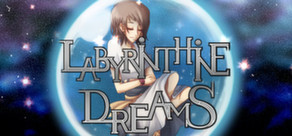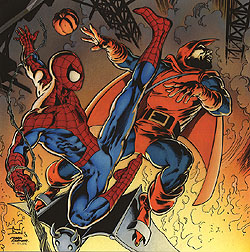 "Part of me thinks I should retire or die peacefully now. It would be better for my reputation." - Satoshi Kon, 2008
"Part of me thinks I should retire or die peacefully now. It would be better for my reputation." - Satoshi Kon, 2008It was a joke when he first said it, but unfortunately it became prophecy.
Paprika, the director's final film, is charmingly familiar to those who have followed his work. Once again, we have reality and fantasy colliding, a heroine with a split personality, and a thundering score from Susumu Hirasawa. It was originally a novel by Yasutaka Tsutsui, a writer who Kon cites as one of his heroes. As fate would have it, when Tsutsui saw Millennium Actress, he was so impressed that he decided Kon was the director who could bring the story to the screen. It shouldn't come as a surprise that the nonsensical, rapidly changing landscape of dreams was perfect fodder for this particular director.
The title character is a cheery, resourceful woman who participates in the dreams of others to help with their mental issues. She is the alter ego of the tightly-wound Dr. Atsuko Chiba, and the technology is possible thanks to the DC Mini, a scientific breakthrough conceived by the childlike, morbidly obese Dr. Tokita. The technology is not yet widely known, but those who participated in its creation have differing views. For Dr. Chiba, it represents a potential breakthrough in the realm of psychotherapy. For the sinister Chairman Inui, it is an invasion of the last truly private element of human life.
 Not long after the movie's virtuoso opening sequence, the technology is stolen and proves to be much more powerful than any of the characters could have foreseen. Dreams begin to merge with reality, and well...things get really weird.
Not long after the movie's virtuoso opening sequence, the technology is stolen and proves to be much more powerful than any of the characters could have foreseen. Dreams begin to merge with reality, and well...things get really weird.Really weird. The insane finale to this film will make you think someone slipped a hallucinogen into your most recent meal. The entire movie is a showcase for one incredible image after another. I don't have enough superlatives for the quality of the animation here, it has to be seen to be believed. If there's anything lacking about Paprika, it's that while it is a very satisfying experience to watch, it doesn't provide the emotional undercurrent that Kon's other work has. Still, after the bleakness of Paranoia Agent, he clearly was shooting for something more light-hearted (though no less complex!)
 Unfortunately, that brings us to the end of this little journey. Kon's sudden death means that Paprika would be the last piece of genius we would get to enjoy from this one of a kind talent. Apparently, he was planning to continue with the themes he explored here. His next film was intended to be called The Dream Machine, and the director described it as a "road movie with robots." The very last scene of Paprika features grizzled cop Konakawa going to see a film called Dreaming Kids. The name may have been altered, but I'm guessing that was a clue to what we were meant to see next. I'm not aware of how far along the movie was, but even if they were to finish it, it won't be the same without Kon to oversee it. Can't help but envy Konakawa now.
Unfortunately, that brings us to the end of this little journey. Kon's sudden death means that Paprika would be the last piece of genius we would get to enjoy from this one of a kind talent. Apparently, he was planning to continue with the themes he explored here. His next film was intended to be called The Dream Machine, and the director described it as a "road movie with robots." The very last scene of Paprika features grizzled cop Konakawa going to see a film called Dreaming Kids. The name may have been altered, but I'm guessing that was a clue to what we were meant to see next. I'm not aware of how far along the movie was, but even if they were to finish it, it won't be the same without Kon to oversee it. Can't help but envy Konakawa now.If it's not clear enough after all this, I found all of this man's work to be brilliant and truly inspiring. I can't have been the only one. I wonder how many in the business have seen Kon's movies and walked away with the same inspiration. The idea of implanting dreams into others, the focus of Christopher Nolan's Inception, is a little similar to Paprika. I also remember noticing how Hayao Miyazaki animated his heroine, Sophie, in Howl's Moving Castle. Sophie fluidly morphed from young to old to young with gray hair, like the many personas of Chiyoko Fujiawara in Millennium Actress.
If you want at least one concrete example, there's this:
 On the left is Perfect Blue, on the right is Darren Aronofsky's Requiem for a Dream. The director revealed that he indeed sought Kon's permission to copy the "bathtub scream" scene shot for shot. You know what they say about imitation and flattery.
On the left is Perfect Blue, on the right is Darren Aronofsky's Requiem for a Dream. The director revealed that he indeed sought Kon's permission to copy the "bathtub scream" scene shot for shot. You know what they say about imitation and flattery. The prospect of no future Kon films or anime shows is a sad one. I suppose I can only hope that Kon's quote holds true, that his untimely death brings about at least a little more attention to his work...and that one day, he will be widely respected by animation enthusiasts as one of the greats.












